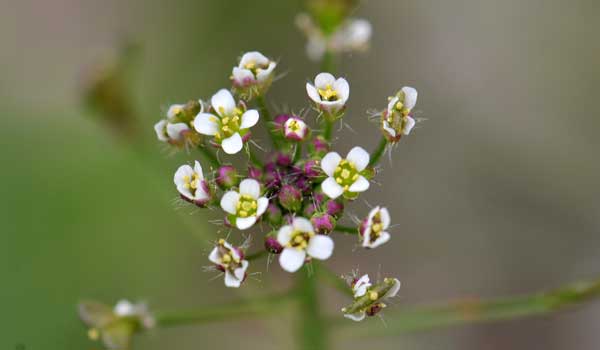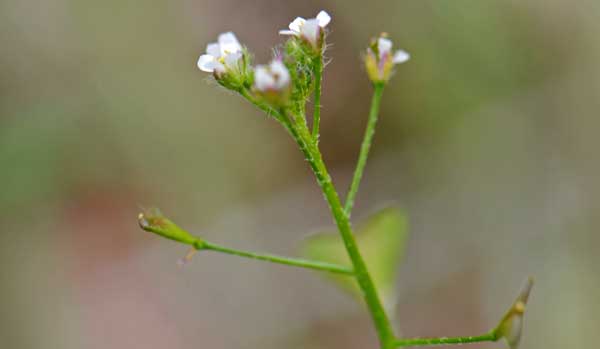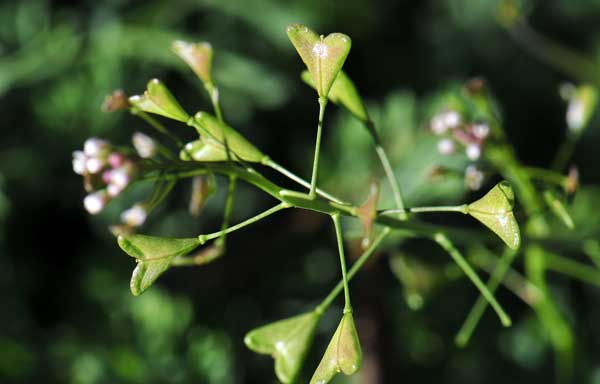Capsella bursa-pastoris, Shepherdspurse



Scientific Name:Capsella bursa-pastoris
Common Name: Shepherd's Purse
Also Called: Shepardspurse, Shepherd's-purse, Shepherdspurse; (Spanish: Bolsa de Pastor, Paniquesillo)
Family: Brassicaceae or Cruciferae, Mustard Family
Synonyms: (Bursa bursa-pastoris, Bursa bursa-pastoris var. bifida, Bursa gracilis, Capsella bursa-pastoris, Capsella rubella, Thlaspi bursa-pastoris)
Status: Introduced, naturalized.
Duration: Annual
Size: 6 or 8 inches, (up to 20 inches).
Growth Form: Forb/herb; erect, grayish hairs, single stem or branches, basal leaves variable, margins entire, toothed or lobed.
Leaves: Green; basal leaves variable, oblong, some deeply lobed, stem leaves alternate, linear, toothed, lobes at base of leaf clasping the stem.
Flower Color: White, 4 petals about ¼ inch long, 4 sepals, flowers in dense terminal clusters on tip of stem, fruit flat, triangular or heart shaped (purse) notched at the top, long stem (pedicel).
Flowering Season: Spring and winter.
Elevation: Up to 7,000 feet.
Habitat Preferences: Disturbed areas, roadsides, lawns and desert landscapes.
Recorded Range: Throughout North America.
North America & US County Distribution Map for Capsella bursa-pastoris.
U.S. Weed Information: Capsella bursa-pastoris is listed in: Weeds of Kentucky and adjacent states: a field guide, Weeds of the Northeast, Weeds of Nebraska and the Great Plains, Weeds of the United States and Canada, and Weeds of the West. Plants included here may become weedy or invasive.
Invasive/Noxious Weed Information: No data available.
Wetland Indicator: Capsella bursa-pastoris is on the USDA 2012 National Wetland Plant List as a facultative species that usually occur in non-wetlands, but may occur in wetlands.
Threatened/Endangered Information: No data available.
Comments: Shepherd's Purse, so named because of its heart-shaped seed pod, is an introduced naturalized species in Arizona and throughout North America.
Several ethno-botanical uses have been identified for Shepherdspurse including its use for headaches and dysentery cramps. See species account from Native American Ethnobotany, University of Michigan, Dearborn.

